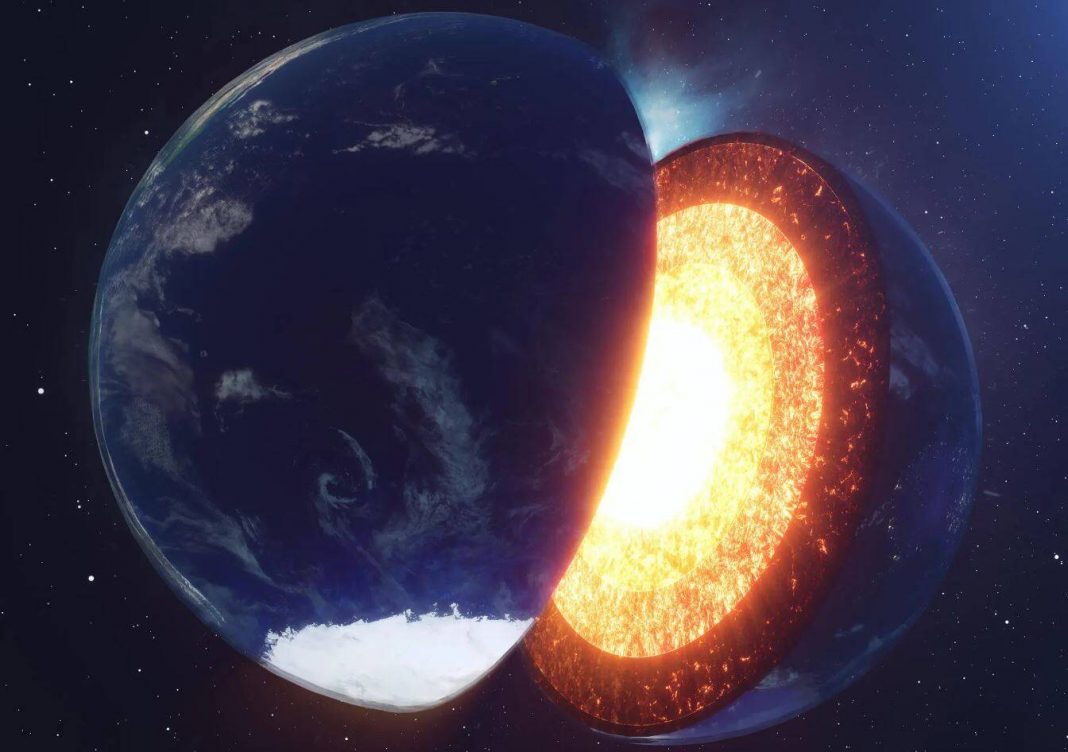Imagine the inner core of the Earth, the dense center of our globe, as a hefty, metallic ballerina. This iron-rich dancer can do pirouettes at varying rates.
This core may be on the verge of a significant change. Monday in the journal Nature Geoscience, seismologists revealed that following short but unique pauses, the inner core alters its spin rate relative to the motion of the Earth’s surface about once per few decades. Currently, such a reversal may be occurring.
This may seem like the setup for a movie about the end of the world. This planetary spin cycle, which may have been occurring for ages, will not, however, result in anything catastrophic. Instead, the researchers that suggest this hypothetical model want to increase knowledge of the innermost sanctuary of Earth and its link to the rest of the planet.
Xiaodong Song, a seismologist at Peking University in Beijing and co-author of the paper, compared the inner core to “a world inside a planet,” noting that its movement is crucial.
Since 1936, when Danish seismologist Inge Lehmann found that Earth’s liquid outer core encases a solid metal marble, scientists have been baffled by this discovery.
The inner core cannot be directly sampled, but intense seismic waves produced by powerful earthquakes and nuclear bomb testing conducted during the Cold War have traveled through it, revealing some of its features. Scientists believe this sphere of mostly iron and nickel is 1,520 miles in diameter and about as hot as the sun’s surface.
However, these waves also posed a dilemma. If the core were inert, the journeys of core-diving waves caused by almost similar earthquakes and nuclear explosions would never vary; yet, they do over time.
One possible explanation is that the inner core’s rotation deflects these waves. Dr. Song was one of the first scientists to postulate in the mid-1990s that the inner core may rotate at a different rate than the Earth’s surface. Since then, seismologists have discovered evidence that the inner core’s spin may both accelerate and decelerate.
What’s happening? Two gigantic forces are competing for control of the world’s core, according to one theory. The magnetic field of the Earth, which is formed by whirling iron currents in the outer core’s liquid, is dragging on the inner core, forcing it to spin. This impulse is opposed by the mantle, a viscous layer above the outer core and below the Earth’s crust, whose tremendous gravitational field grasps the inner core and slows its rotation.
By analyzing core-diving seismic waves recorded from the 1960s to the present day, Dr. Song and Yi Yang, another Peking University seismologist and co-author of the paper, hypothesize that the inner core spins back and forth on an approximately 70-year cycle as a result of this immense tug of war.
In the early 1970s, the inner core was not rotating relative to a person standing on the Earth’s surface. Since then, the inner core has progressively accelerated eastward, ultimately surpassing the rotational speed of the Earth’s surface. Subsequently, the inner core’s spin slowed until it seemed to have ceased rotating between 2009 and 2011.
Now, the inner core is beginning to progressively rotate westward relative to the surface of the Earth. It will most certainly accelerate and then decelerate again, reaching another apparent halt in the 2040s and completing its most recent east-west spin cycle.
This 70-year pattern, if it occurs, might have a measurable impact on portions of the Earth’s interior. However, it may only be capable of stirring up very modest turbulence closer to the planet’s surface, maybe by creating tiny variations in the planet’s magnetic field or even by very slightly adjusting a day, which is known to vary by a fraction of a millisecond every six years.
This is only one of the numerous contending explanations for the unpredictable journeys of waves that reach the core. It is also plausible that the deepest layer of the planet is shifting. In contrast, the surface of the Earth’s ferrous core may undergo metamorphosis, causing any seismic waves that penetrate it to be deflected. “No matter which hypothesis you want, there are statistics that contradict it,” said Dr. Vidale.

